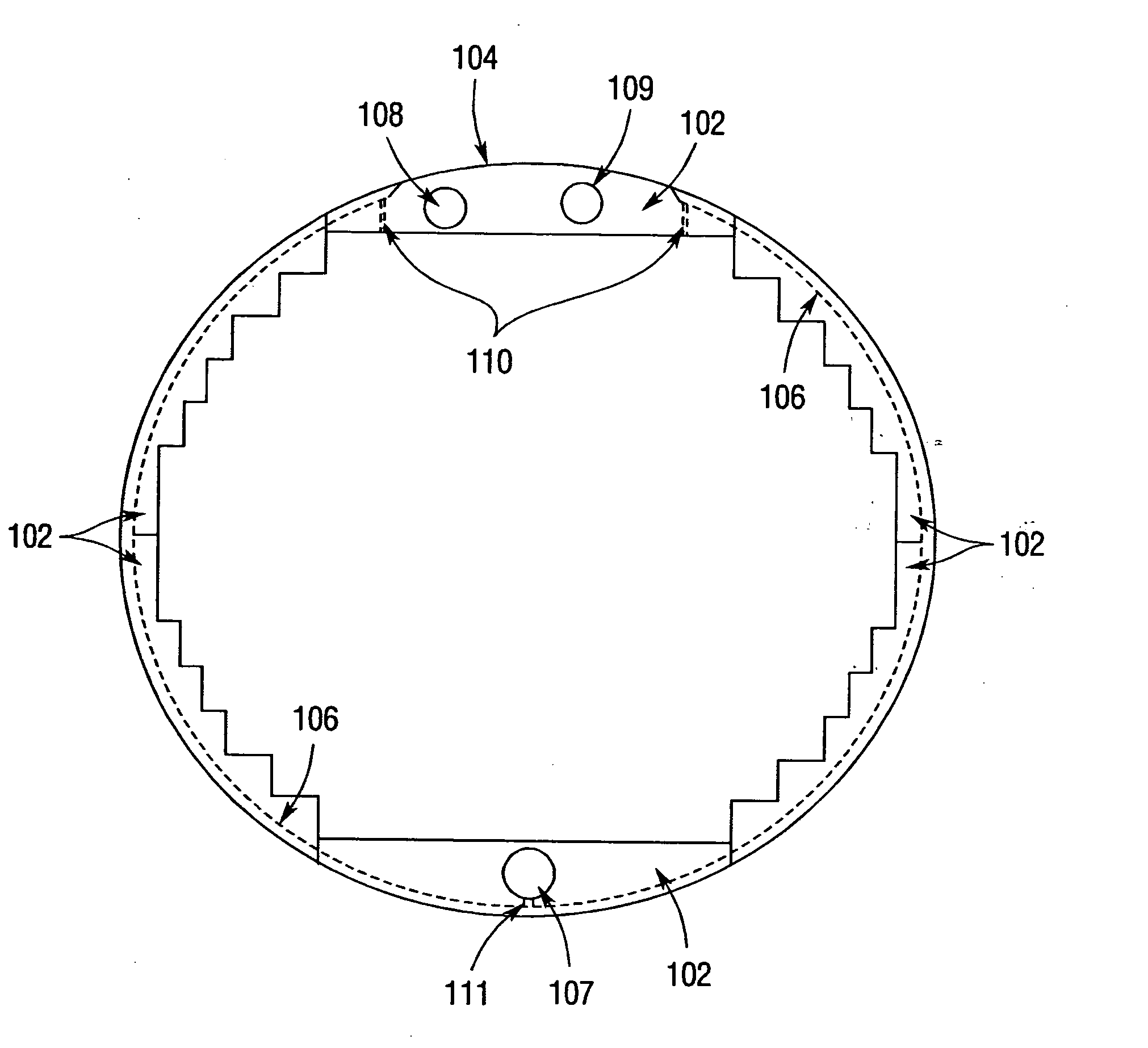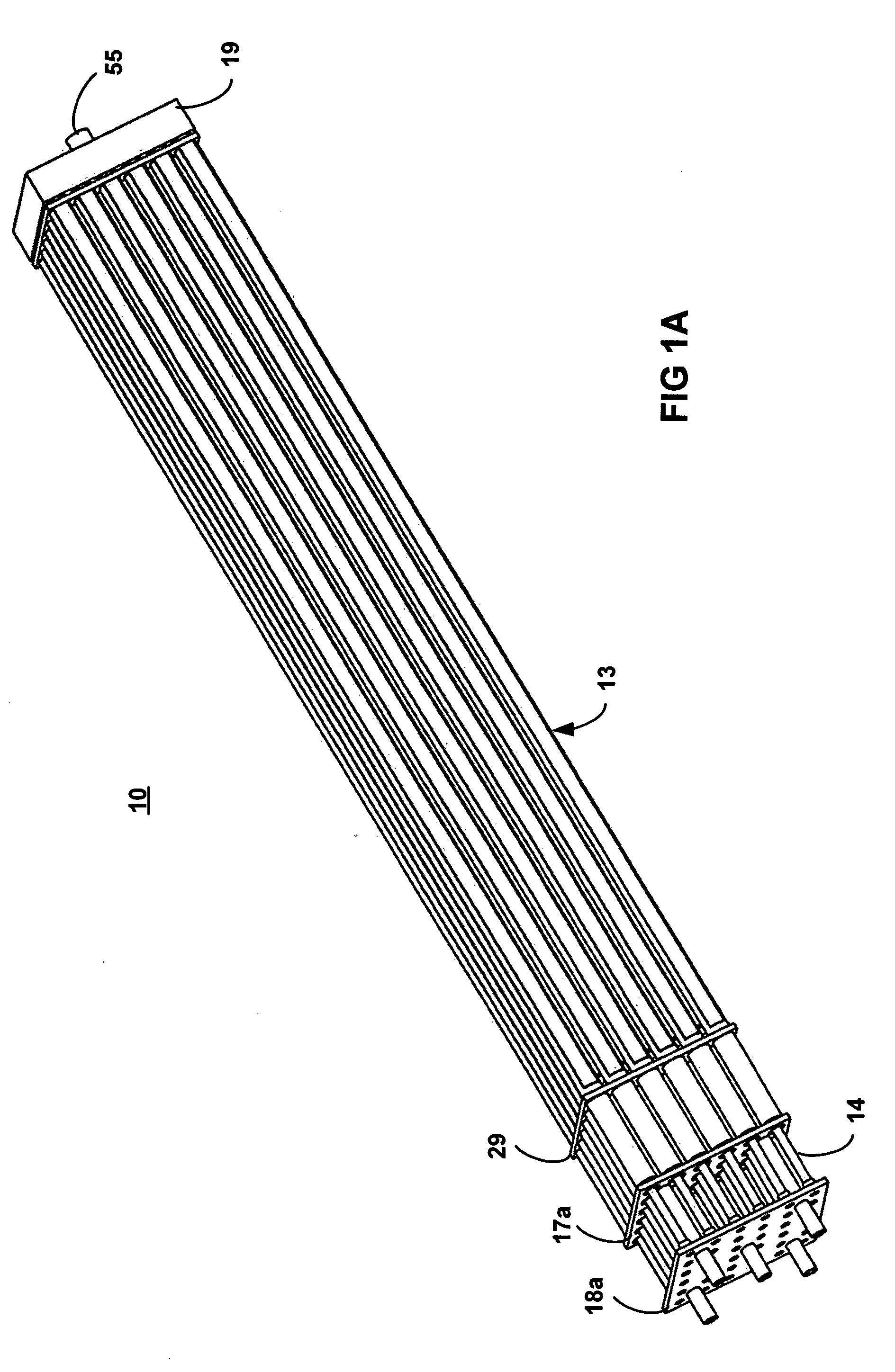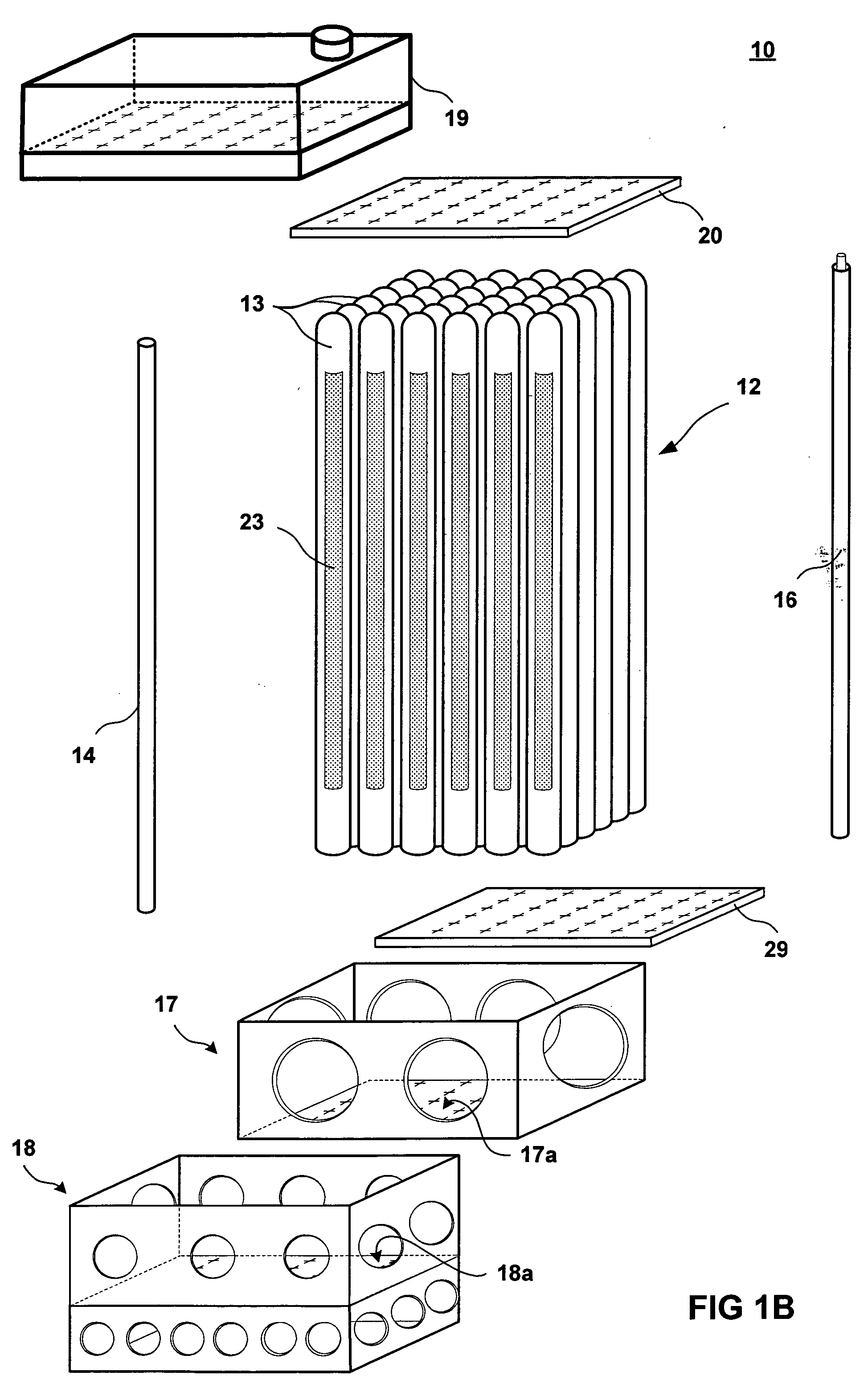Multi-function solid oxide fuel cell bundle and method of making the same
a fuel cell and multi-functional technology, applied in the field of fuel cells, can solve the problems of ineffective advancement, insufficient fuel distribution system, and evolution of internal combustion engines, and achieve the effect of being practiced
- Summary
- Abstract
- Description
- Claims
- Application Information
AI Technical Summary
Benefits of technology
Problems solved by technology
Method used
Image
Examples
Embodiment Construction
[0061]FIG. 1A is a perspective view of a multi-function bundle according to one embodiment. The multi-function bundle 10 embodies all of the basic support functions for the fuel cells 13 in a single, integrated unit. For example, the multi-function bundle may embody one or more of the following functions in a single, integrated unit: cell-to-cell electrical connections, oxidant distribution, fuel distribution, fuel reformation, process exhaust, process gas recirculation, and oxidant / fuel combustion, among others. Accordingly, the multi-function bundle 10 may be a modular unit that serves as a building block for building larger assemblies, for example, a generator stack (as best shown in FIG. 15). Thus, the multi-function bundle 10 reduces the effort needed (and eliminates extra costs typically encountered) during generator stack assembly and / or repair.
[0062]FIG. 1B is an exploded view of the multi-function bundle 10 of FIG. 1A according to one embodiment. The multi-function bundle ...
PUM
| Property | Measurement | Unit |
|---|---|---|
| Temperature | aaaaa | aaaaa |
| Weight | aaaaa | aaaaa |
| Flow rate | aaaaa | aaaaa |
Abstract
Description
Claims
Application Information
 Login to View More
Login to View More - R&D
- Intellectual Property
- Life Sciences
- Materials
- Tech Scout
- Unparalleled Data Quality
- Higher Quality Content
- 60% Fewer Hallucinations
Browse by: Latest US Patents, China's latest patents, Technical Efficacy Thesaurus, Application Domain, Technology Topic, Popular Technical Reports.
© 2025 PatSnap. All rights reserved.Legal|Privacy policy|Modern Slavery Act Transparency Statement|Sitemap|About US| Contact US: help@patsnap.com



